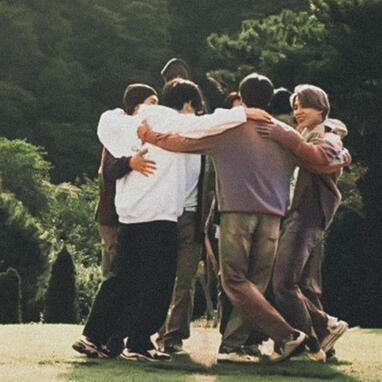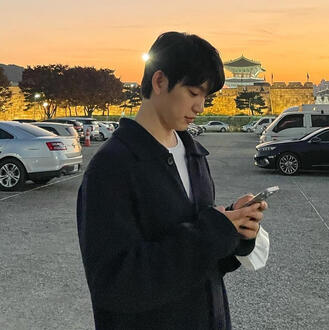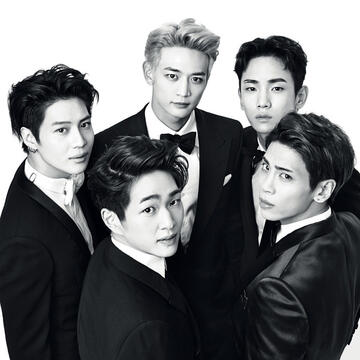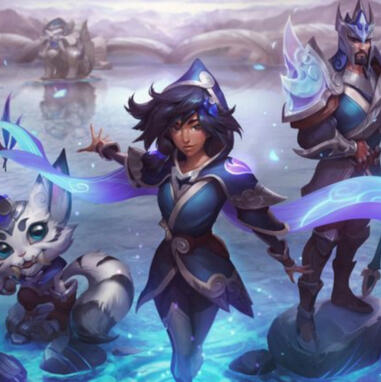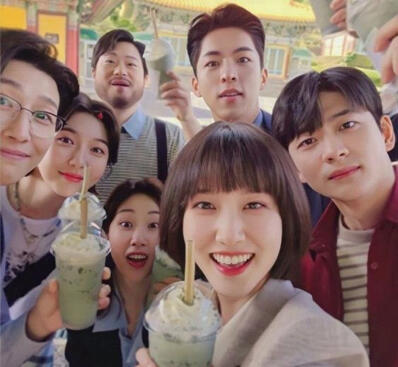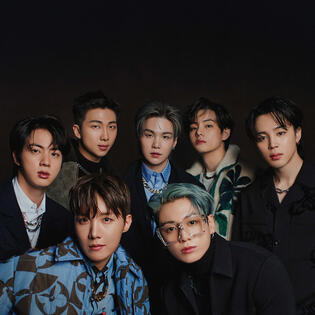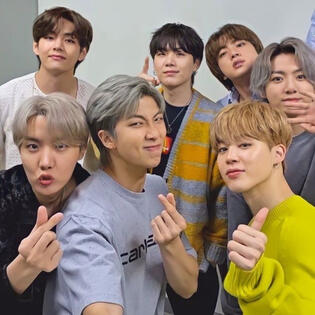
Fandoms as a common transcultural language
Asian fandoms in Tallinn as a case study
Please view the portfolio on laptop for optimal view

About the project
On this page you will find:
What is an ELU project
What our goal was and why we think this research is relevant and significant
Why we focused on East Asia
Our key terms of reference
Our input about the interdisciplinary aspects of the project
What's an ELU project?
LIFE (or ELU in Estonian) is a study course where students from different study areas collaborate with academics to carry out projects focusing on interdisciplinary problems of their own interest.LIFE course is assessed on a non-differentiated assessment scale and has a course volume of 6 ECTS.Work is carried out in teams that consist of 6 students, including students from at least three different study areas.
Project aim and relevance
Fan studies are not, by any means, new to academia, and there has on the contrary been substantial research starting from the 90’s. The most frequent themes of these studies, and those we have relied on for background evidence on the topic, are about:
Fandom and the sense of community (Branscombe & Wann 1991; Bacon-Smith 1992; Hirt & Clarkson 2011)
Identity formation (Peyron 2013; Ray et al. 2017; Chadborn & Reysen, in press)
Well-being (Wann 2006; Haslam et al. 2009; Mock et al. 2013)
Educational uses (Anderson Howell 2018), and its relation to internet and social media (Laffan, D.A. 2021).
Additionally, it is worth noting here that while first researchers focused mostly on sports fandoms, there has been a noticeable shift in recent years towards media belonging to pop culture. It is in that new wave of interest that we aim to surf with this project, by not only focusing on pop culture but also investigating how it can be used as a tool that facilitates the creation of connections between people, especially from different cultural backgrounds.With increasing numbers of international students traveling around the globe for their studies, we were curious to see if fandoms had what it takes to be a common denominator efficient in easing the adaptation process of new students when they arrive in such a multicultural environment.This project ergo aims to add to the discussion about community and identity formation by looking at fandoms as a transcultural language. This new role entails several implications concerning the topics of research around fandoms previously mentioned, such as the idea that communities and identities can be created and/or formed through a fandom independently of the cultural codes and values of the persons involved.This approach consequently unlocks the potential of a transcultural language, and a tool of socialization since fandom seems capable of instigating a shared identity and community that eases other possible, cultural or other, differences between the members of a shared environment like university.It is in that potential that the heart of our project lies, in the idea that fandom helps people connect to each other and not just in online spaces. Fandoms can, and we argue with this project should be put to use to smoothen the integration process of, in the context of our study, new students at Tallinn University.
Why East Asia?
The scope of our project focused on East Asian fandoms for three reasons:
Investigating all fandom spaces would have been too vast of a task considering the limits in terms of time and scope of the present project.
The project supervisor has a specific interest and knowledge in Asian studies.
As a response to the current socio-cultural context characterized by a thriving media wave from East Asia.
Tallinn University has an active Asian studies department that fosters interest in East Asian cultures in the students.
Terms of reference
You will find below an explanation of the key terms related to our research, awareness of these terms is essential to a good understanding of the project.
Fandom
• Fandom may stand for both a state of being a fan and a group of fans altogether.• It can also be understood as “the realm of avid enthusiasts”, a community based on the common interest or/and admiration of a person/character or a text (film, book, comics, anime series, etc.)• Fandom is often characterized by a feeling of empathy and camaraderie towards other members and participation in fannish practices, including engaging with a text, making their own meanings, and producing new works (such as fanfiction, fan drawings, etc.)
Transcultural
• Involving, encompassing, or combining elements of more than one culture• Existing across all human cultures. Usually refers to ideas, influences, practices, and beliefs that either a) move between cultures, come together and fuse; or b) are universal.
East Asia
• East Asia is the eastern region of Asia, which is defined in both geographical and ethnocultural terms. The modern states of East Asia include China, Japan, Mongolia, North Korea, South Korea, and Taiwan.• Note: while this project focused on fandoms emerging from the pop culture of China, Japan, South Korea, Taiwan, popular type media of other Asian countries was included in one of the questions of the survey.
Community
• A community is a group of individuals sharing a commonality such as a place, norms, religion, values, customs, or identity.• Members of a community often have a sense of trust, belonging, safety, and caring for each other, and, consequently, an individual and collective sense that they can, as part of that community, influence their environments and each other.
Hotspot
• A lively, popular place for entertainment or socializing.• A place regarded as a center for a specified activity or interest.
Culture
• A general process of intellectual, spiritual, and aesthetic development.• A articular way of life, whether of a people, a period, a group, or humanity in general.• The works and practices of intellectual and especially artistic activity (Williams, 1976).
An interdisciplinary project
Our team members all come from different cultural and academic backgrounds, with the common point of sharing an interest in Asian fandoms and pop culture.This diversity was beneficial to use as a multifaceted methodological approach, and enabled us to turn it into a productive analytical approach by harmoniously integrating inputs and methodologies from different disciplines, such as anthropology, cultural studies, and area studies, among others.The project overall combined both digital data collection, in-person interviews with informants, as well as qualitative report and data analysis based on cutting-edge scientific publications on pop culture and fan studies, cultural analysis and Asian culture and society.
An interdisciplinary project
Fátima
Anthropology uses a qualitative approach that explains social reality through the very own understanding of the individuals embedded within. Additionally, it is a career known for the study of different cultures throughout the world. This is why, for this project, an anthropological approach helps us to understand how, although some people come from extremely different backgrounds, they can still find common ways of communicating with each other through shared experiences and languages, of which fandom is our case.
Djahane
My degree is at its base an interdisciplinary program, and I chose it because it makes more sense to me to tie what I know together by creating bridges between the things I learn. This was particularly helpful for this project since we had to build on our respective strengths, for instance I’m not good with numbers or data analysis, but some of our group members have degrees related to that.
Andero
I study applied computer science, so prior to joining, my initial idea was that I would probably contribute to building our website or doing graphic design, which are the main areas of my curriculum. However, our team had other members who wanted to be in charge of those aspects. Instead, I got to focus on using the skills I use at work, which are related to data analysis and pretty much everything related to numbers, spreadsheets and graphs. Those skills were useful in planning how our online survey would be structured and later, analysing the results of the survey.
Fifi
I spent my first semester in Human Computer Interaction (HCI) before transferring to Digital Learning Games (DLG). What I learned in HCI has helped in determining the analysis method for the qualitative data resulting from the interviews in this project.
Emilia
My degree combines anthropology and cultural studies, which helped me to create and understand connections between fandoms and friend making.
Anastassia
My major is Asian studies and it gives me a pretty good understanding about Asian culture and fandoms, this is why I think it was helpful for this project. To a certain extent my knowledge about psychology was helpful for analysis, since the aim of this project was to understand how people with different cultural backgrounds can still connect with each other.
Angelina
I'm majoring in Asian Studies with a concentration in Chinese Studies, and I'm minoring in Anthropology. Because this is my degree, I'm fully immersed in East Asian culture. Anthropology was beneficial because it helps to understand how individuals from various cultures may find something in common via their connections.
Marie
Among the subjects included in my master's program, Literature, Visual Culture, and Film, cultural analysis has been particularly exciting and fortunately beneficial for this project, illuminating the way works of art and popular culture fuse and dissolve into the mundane, almost palpable culture of people as both individuals and communities through routines and creative practices in which we repetitively interact with texts; how communities themselves are conceived and flourish, nurtured through collective engagement in practices of enthusiasm, "fannish" practices.

About us
Click on the names to be taken to our profiles and learn a little about our team!
Our mentors
Our supervisor
Our members

Lisa
Hi all, my name is Lisa, I’m Italian and I have always enjoyed studying languages since I was a child. I speak Italian, English, German, Chinese, some French and Japanese.Since 2020, I have joined the academic community at Tallinn University as Associate Professor of Chinese Studies. I am a specialist on premodern China and currently teach courses on Chinese culture, intellectual and conceptual history, and philosophy. I also collaborate with the Confucius Institute, where I teach extra-curricular courses such as Classical Chinese. My main research interests include early Chinese thought; Classical Chinese rhetoric, paradoxes and language jokes; conceptual and intellectual history of premodern China, also from a comparative perspective; and cross-cultural encounters between China and Japan.As for pop culture, I’m a former gamer, avid fantasy (among other genres) book reader, and, as most kids growing up in Italy in the 1980s, I was exposed very early on to Japanese anime culture. I have begun reading manga as soon as the first comic book stores started to carry them in the late 1990s/early 2000s in my hometown, and haven’t stopped ever since. I have a preference for shōnen (Berserk, Inuyasha, City Hunter); historical (Rurouni Kenshin, Vagabond, Versailles no Bara); sports (Slam Dunk, Capitan Tsubasa, Attacker You!) manga and anime, with some digressions in dystopian futures (Cowboy Bebop, Neon Genesis Evangelion). I’m now also approaching East Asian tv series, once again mostly through manga, as for instance Midnight Diner.Contributing to this project has been a particularly enjoyable experience, as it harmoniously combines my professional academic interest in the re-elaboration and original re-interpretation of traditional elements in contemporary East Asian pop culture phenomena with my personal love of East Asian cultures and cultural products, both ancient and modern.Please feel free to reach out to me at: [email protected]

Linda
Hi! My name is Linda and I’m from Estonia. I speak mainly Estonian and English and tiny bit Korean, Spanish and Russian.In addition to working in Tallinn University I’m also finalising my PhD in Information Society Technologies. I am a junior researcher and head of Educational Technology M.Sc. programme in Tallinn University School of Digital Technologies.I’ve worked in Tallinn University since 2015 and started as a lecturer. My main research focus is digital competence, competence assessment (evidence-informed decision-making), online behaviour relating to digital literacy, educators’ professional development and technology used to support student learning.When it comes to fandoms, I’ve been an ARMY since spring 2019. This project has been a great way to view my interests through a research perspective and supervise students in understanding fandoms research inquiry as well.

Paula
Hi!
My name is Paula. I work at TLU as a project development specialist and teach quantitative data analysis. I have a master’s degree in sociology and my main research interest is youth participation on social media. As a young person myself I have participated in fandom online and offline for most of my life which has made this a very interesting project to be a part of as a supervisor.

Djahane
Ahoy, fellow sailors and shippers of fandom waters!My name is Djahane, I’m a bachelor student in liberal arts in humanities, and also happen to be the supervisor of this project.I speak English and French at the same level, and I’m learning (at different levels of dedication) Korean, German, Japanese, Estonian, Spanish, and Turkish.Supernatural, The Vampire Diaries and Teen Wolf were my first gateways to the wonderland of fandoms, but in the past eleven years I’ve sailed into many more spots on the fandom map.That journey has given me a significant nudge towards being more curious and interested about Asia, and has for instance inspired me to learn about the language, the food, the culture.I decided to start the project because pop culture, as fun as it might be, is also a topic worth being researched seriously. It is also one of the fields of academia I have, and will continue, to engage with through the assignments and projects I've been involved with.Asian pop culture in particular has been on the rise at an incredible pace of the past years, and the curiosity and interest these culture waves are triggering are opening the minds of many, but also giving people from around the world ways to connect with each other using fandoms as a common language.I've started or strengthened friendships through fandoms, and it's such an easy way to connect that it's too me quite a shame fandoms aren't being used to their full potential.Fandoms can skip the awkard ice breaking, fandoms aren't just studying the same subject or coming from the same country; it's something we're (more often than not) passionate about, and what better than to make friends through something you love?
I am open, and very much interested, in collaborating on projects related to fandoms, pop culture or Asian studies (both in academia or other fields), so don't hesitate to reach out! Ways to reach me are at the top of this page.
a few favs among many

Andero
Hi, I’m Andero! 🌅I come from the lovely seaside town of Haapsalu and I’m a second year student of applied computer science in Tallinn University Haapsalu College.I’ve been into East Asian fandoms since 2006 when I first started listening to Japanese music - I’ve always been super into charts and statistics and I knew that Japan had the second largest music industry in the world, so I wanted to check out what was happening in the J-Pop scene and I loved what I heard! :-)Three years later I delved deeper into K-Pop and my interest has shown no signs of slowing down ever since. (My favorite way to start the weekend? With the newest Music Bank episode, of course! :-))Over the years I have created several personal connections, both online and offline and anywhere from message boards to Tumblr to Twitter, that have been based on a shared interest in J-Pop and/or K-Pop, which is why this particular project piqued my interest from the dozens of options.The fascination with charts and statistics that I mentioned earlier has also not gone anywhere, so I was happy to take on a more substantial role with our online survey and analyzing the responses.It’s been a while since I last participated in the process of creating a survey, so that was nice to revisit. (Also, big thanks to all 1128 of you who took our survey! :-))Feel free to reach out to me by email: [email protected]

Emilia
Heyya ʕ •ᴥ•ʔI´m Emilia and for now 21 years old. Geographically I´m from East Europe (Estonia c; ) and speak Estonian, English, and a bit of Japanese. Academically I'm a student of Liberal Arts, or how I usually explain it: Anthropology and Cultural Studies.♡ Fandoms: (ノ゚∀゚)ノ⌒・:.。. .。.:・゜゚・*☆ Into anime and games. Especially love Madoka Magica, Devilman crybaby, the first season of Evangelion, and League of Legends.♡ Asia infusion(?): (ㆁᴗㆁ✿) I quite enjoy learning new things so, besides language, I already knew most things that one needs to know about the areas of interest to me. Therefore now I am mostly learning languages. My main motivation to learn new languages and society is my dear dear friends.Thank you for reading!! ( ˘ ³˘)♥

Marie
If you’re reading this, hi!My name’s Maria, I’m Ukrainian, and currently I’m doing my M.A. in Literature, Visual Culture, and Film. I took up this project not only because anime and manga have been a significant part of my life, especially in my teenage years, cheering me up on the blue days but also because I believe that shared passions help us open up and step by step build connections, hopefully as cherished, as the favorite pieces of media, stories, that linger to our heart and that we exchange.Leaving you these little recommendations - works that have moved my heart, I might reveal more about myself then telling in words. Anyway, I hope you will enjoy them, if you decide to them check out ~
To watch:
Barakamon, 2014
Haikyuu!!, 2014-2020
Howl’s Moving Castle, 2004
To read:
Cheese in the Trap, 2010-2017
Lore Olympus, 2018-present
if anything, you can always find me here:
IG: @findmelight~ thank you & take care!

Fátima
Hello!My name is Fátima, I'm 30 years old and I'm a master's student in Anthropology from Peru! I speak
Spanish and English :)
One interesting fact: I have been involved in fandom life for more than half of my life! I remember starting to get obsessed with anime when I was 13 years old when social media didn't exist and you had to find your online communities through blood, sweat, and tears, haha.I was raised in Geocities and MSN Communities, I blossomed in DeviantArt, lived through the fall of Livejournal, found a home in Tumblr only to watch it burn down to ashes later, and finally, found a quiet corner in the dark alleys of the black districts of Twitter.Throughout this journey in fandom, I have made the best friends I could have ever asked for from different countries, I have traveled to meet people (and people have traveled to meet me!), and my creativity has flourished in the most beautiful ways.Honestly, how do people without fandoms even live? I have no idea.
I have engaged mostly in Anime fandoms, JPOP (Johnny's), and now recently in Western shows. My main fandoms are VLD, Yuri!!! on Ice, House of the Dragon, and the Gundam franchise.My first fandoms were Shaman King, Inuyasha, Card Captors Sakura, and the boyband KAT-TUN.While I haven't been to Japan, I plan to go there eventually, and I started classes in Japanese! I respect the culture a lot, and if I'm being honest, my career was also chosen based on fandom: I wanted to understand all the different cultures I could see portrayed in the series I enjoyed.I wanted to understand the world that surrounded me.
I joined this project out of my love for fandom and cultures in the world. I believe that anthropology should be used to bridge the gaps between people, and I think fandom is a great tool to do it.I wanted to combine my expertise and experience to help others not only to communicate better but to discover the world through other people and shared passions ♥
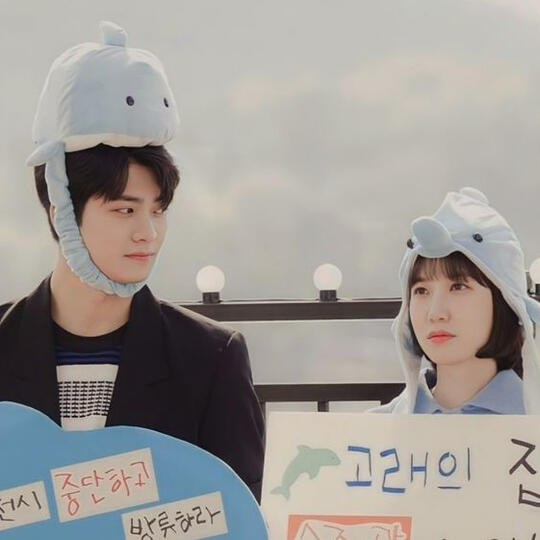
Fifi
Hello! I’m Fifi. I’m from Indonesia, and currently studying in the Digital Learning Games Master programme. I speak Indonesian and English, and am starting to learn Spanish soon. As much as I want to learn Korean, my schedule doesn’t allow me to, so I’m putting that on hold until further notice.I am not a gamer, and I don’t think I will ever be one. But, I am interested in exploring the use of games beyond entertainment. Do you know that people learn more effectively through games than they do with the traditional methods? :)I’m into K-drama, and lately K-pop as well. I started watching K-drama after COVID struck, it was one of the few things that helped me get through the lockdown period. Now, it’s my go-to entertainment, especially when I need to step back from my hectic life – it never disappoints so far.My favourite genres are comedy, romantic comedy, legal, medical, and sometimes action and historical.
My favourite K-dramas so far are Extraordinary Attorney Woo, Our Blues, and Vagabond. The list is growing whenever I get hooked on interesting series.I visited South Korea a couple of years ago, but I wasn’t into K-dramas yet back then. So, it was a pure travel and exploration kind of thing. I am putting South Korea back on my travel wishlist again. The next time around, I will be looking into K-dramas related spots and activities.I have many classmates, but none of them are into K-dramas. I’ve found it a bit challenging to meet people with the same interests in Tallinn, so when I saw this LIFE Project, I was thinking, this is the group of people I will not feel awkward with talking about this kind of stuff, so I immediately applied!I’m happy that I’m a part of this project. I got to know wonderful people, which I wouldn’t otherwise. I also got to learn about how fandom affects people’s lives, and it really surprised me!Enough said, I hope you learn something from our projects as much as I did. If you have any K-dramas or K-movies recommendations, or you just want to say hi, hit me up at [email protected] or my social accounts.안녕 (annyeong)!! ♥︎

Angelina
Helllooo!Angelina here; I’m Estonian and speak English, Russian, and am learning Chinese. At the moment, I'm majoring in Asian Studies (with a focus on Chinese Studies) and minoring in Anthropology.In order to satisfy my insatiable need for knowledge about Asia, I’ve been immersing myself in its language, food, and culture. The Korean people, their history, and their language fascinate me just as much as the Chinese culture that I adore. Learning more and more about Japanese culture as well.I like C-dramas and K-dramas. In 2017, I gave in to curiosity and began watching dramas after hearing several of my friends gush about how much they enjoyed and appreciated the genre’s unique take on the “traditional” western television series format.It’s become my primary form of entertainment. The comedic, romantic, legal, action, and even the occasional historical are my favourites. Go Go Squid, Well-Intended Love, and Arsenal Military Academy are three of my favourite C-dramas. Mr. Queen, The World of the Married, Goblin, and a tonne of others are some of my favourite K-dramas.Thank you!you can always find me on my instagram (link at the top of the page)

Anastassia
Hii!My name is Anastassia and I am 22 years old. I am from Estonia and my native language is Russian. Also I can speak English and Estonian. My major is China studies and I am also learning korean.My curiosity in Asian fandoms began in the beginning of 2015 with the k-drama “school 2015”(btw 100% recommended). After that I found out about k-pop and my first group was BTS. So I am army since 2016. I think that was the main reason why I chose this project, as a person who has been in a fandom since 2016 it was interesting how being in fandom helps people to make friends all around the world.I am happy that being in fandom has motivated me to learn new languages and also thanks to fandom I have some friends from different parts of the world!Thank you!!!You can find me on instagram (link at the top of the page)
IG: @_ayytsan

Research methods

Interviews
Who did we interview?
We selected places that we deemed to be active hot-spots related to fandom and Asian culture. Some places were more about fandom than Asia, or vice-versa, others had a nice balance of both, but we believe the diversity enabled us to gain a wider perspective on how people interact with both fandoms and Asian culture.You can find below the list of all places we interviewed.
The Chinese Corner
The Chinese Corner is a club at Tallinn University that organizes activities and events related to Chinese culture, and to create opportunities for Chinese learners to practice the language.
Cin Cin Bubble Tea
Cin Cin is a bubble tea shop in Tallinn founded by three friends who wanted to share an authentic taste, as well as a space for people to meet and have fun! They often organize events like game nights, and they were also kind enough to let us host our focus group sessions at the café ♡
King Sejong Institute
Located in Tallinn University, the King Sejong institute offers a variety of classes and events related to Korean culture.
Logistics
We first considered the option of video-recording but decided against it to make sure our interviewees, as well as our group members, would not feel the pressure of the camera and feel comfortable during the conversation.
Instead, we decided to audio-record the interviews for the practicality of being able to do the transcripts later on. Accordingly, we designed a consent form to inform our interviewees about how the data they provided would be used.
You can find below the template of our consent form:
Why interviews?
Our research methods were divided in three parts because we aimed to gain a wide understanding through diverse perspectives. We chose to use interviews for the data gathering on local businesses and organizations that we considered hot spots, either of fandom culture or Asian culture (or both at times).We wanted to conduct semi-structured interviews, as well as semiformal because we wanted to have a conversation with the owners/workers, about themselves, about their work, and their experience. Not only that, but we were curious about the connection they, as individuals, had to the topics we were researching, but also about the insight they had due to their role in key centers of fandom or Asian culture activities.To get the data we were looking for, we prepared a set of questions that was meant to be broad enough to cover both the interviewee's personal background and their perspective on the concepts at the heart of the project.We aimed to have a semiformal tone, and also practiced the questions in a mock interview with our group members to make sure they would flow nicely into a cohesive conversation.The cohesive element was particularly important for us, so we had instructions to follow our prepared questions only as guidelines. On our document with the questions we notably had this note:
"At the beginning of the interview encourage your interviewee to share stories/anecdotes about their shop and experience, so that they do not feel they need to just answer the question and move on to the next."
We had aimed to have questions that flew nicely together, and were quite satisfied because our mock interview was, in that regard, similar to the ones we later conducted for real. Often, questions did not even need to be asked because the answers naturally came up in our conversations with the interviewees.Still, it is worth noting that despite not necessarily using all of them every time, the drafting process of the questions was very important in our process. Indeed, it allowed us to focus more, and ask ourselves what exactly do we want to know? what insight, and about what, are we looking for?You can find below the full list of questions we had prepared for our interviews.
List of questions
About the shop/organization
When did you open this store?
What prompted/inspired you to open this shop?
Has it been hard to find your customers? Or was it easy from the beginning?
What are your best-selling merchandise(s)?
What are the most popular social media platforms for your establishment? What social media platforms have the widest reach?
Which fandom-related activities do you host/plan to host in your shop? (For shop owners)
Fandoms and Asian culture
Why do you think your store is attractive for people in fandom?
From your perspective and experience, does fandom contribute to people creating connections? How?
How would you describe the role of your establishment in that process of creating connections?
Would you consider this place a hub for people interested in East Asian culture?
Concluding questions
Imagine you must have a chat with someone you don’t know. You must choose between having a chat between person A, who’s from the same country as you. Or person B, with whom you share at least one fandom. Which one would you choose?
What is your favorite part of running this place?

survey
The first and key aim of the survey was to get us as wide and diverse a pool of data as possible. While the interviews were meant to bring us Tallinn specific stories, and the insight of people in charge of hot-spots, and focus group discussions had the role to highlight individual fans’ experiences, the survey’s value primarily lied in its numbers.We would have been happy with even one or two hundred responses as those already exceeded our expectations, but fandoms truly proved their magic with a grand total of 1 128 responses.Yet even if we had not anticipated such a big number, we did take into consideration the fact that the survey would be the most suitable way to gather precise data, and ergo agreed on trying to only have questions that required yes/no or a selection of already set offered responses. The details of people’s stories would be covered in the interviews and focus groups, so we were looking for evidence in numbers, and for patterns to see if there was data to support our claims.The creation process of the questions was one of the key steps in the process of the project, but we all had to heart to create a survey that not only would bring us valuable information, but would also be as inclusive as possible so that all respondents would feel comfortable and have options they could relate with.That inclusivity applied on several aspects, for instance through gender since all team members are keenly aware, and supportive, of the understanding of gender as a spectrum and not a binary; as well as our respondent’s right to refuse to disclose the information if they do not want to. Inclusivity also shows in regards to nationality, or mother tongue, especially because the context of Estonian society is quite representative of how common it can be for someone to have a bi-cultural background, and we also believed it was a relevant factor to take into account.The next most important element to note regarding the survey is its structure. We had defined key terms and concepts we wanted to get insight on, but had initially drafted our list of questions for all three of our methods in order to properly cover the overlapping themes. Our selection process specifically for the survey hence focused on the format of the method, and we decided to make it an asset by favoring close-ended questions.Once we selected questions based on their suitability for the survey format, our next step was then to put them in an order that would make sense with smooth transitions between the different topics covered. To achieve this natural flow of questions, our group members each took the survey twice, at different stages of the process, to evaluate and give feedback on the survey taking experience.Lastly, the diversity of ways to interact with fandom content simply in our group encouraged us to keep in mind to give as many options as possible, albeit within a set limit for the sake of logistics. Consequently, we did our best to incorporate as many options regarding practices and interests as possible. This way, we would get a more accurate picture of reality and of possibilities through which fandom could be implemented as a tool for people to communicate with.
The feedback we have received regarding the survey, whether it be in terms of inclusivity or content, was very rewarding for all group members. Users on reddit were the most vocal with positive comments about our efforts, and you can find a few (anonymized for privacy reasons) below:
Very good of you to allow people to choose two nationalities. ♥♥♥
Done, appreciated the inclusivity and thoughtfulness of the questions!
I think it's a great topic, especially since mainstream media only focuses on the "frenzy" around East Asian content influx. I'd love to read your conclusion after you've gathered data, and who knows, maybe your work will be a fundamental reference for someone else's future research
I wish I could've also conducted a research project on a similar topic while I was in uni but researches in mine are limited to our degree program :// I answered the survey and enjoyed it hehe best of luck to you and your group! Will you be letting the results accessible in the link at the end of the form? I am interested to read the whole research too.
I took the survey, and am interested to see the results. I feel like the survey is about me. I started with no connection or knowledge of East Asian culture or history. I have learned so much, and appreciate and understand so much better now. P.s. I love the Genshin Impact background on your website. Diluc main for life!
I bookmarked the survey, want to see the results.♥️
Survey promotion
We promoted the link to our survey, firstly through physical posters (see below) that were put up at Tallinn University, as well as some of the locations where we conducted interviews. Secondly, through social media on the following platforms: instagram, facebook, twitter, tumblr, discord, and reddit (which brought us the most responses)

Data disclaimer
You can find below the data disclaimer that respondents could find at the top of the page when taking the survey:
Your participation in this survey is voluntary. You may refuse to take part in the survey and exit the survey at any time.
All respondents must be at least 18 years of age.
All answers are anonymous, so your email will not be saved.
Data recorded will be analyzed by the group members, and published in the final portfolio.
If you have any concerns or questions, please do not hesitate to let us know via our email: [email protected]

Focus groups
As it has by now been made clear, each of our research methods had a specific purpose and a specific type of data we aimed to gather through it. For the focus group we wanted to collect not the insight of an observer from hotspots, or the big numbers to close-ended questions that the survey was designed for. The aim of these two sessions was to get personal stories, to hear the participants’ anecdotes and experience relating to both fandoms and Asian culture, hence our decision to favor a qualitative research method over a quantitative one.To achieve that goal, we restricted our pool of participants to Tallinn University students, both current and alumni. Our idea was that their perspective on the matter would be fresh, especially since some of them had arrived in Estonia as international students very recently.
We created posters and social media visuals, that you can see above, to promote the link to our registration form.That form explained to the potential participants what the aim of the session would be, and how it would be conducted, including how the recordings of the session would be used since it was the method we chose for the focus groups as well.The the data disclaimer on the registration was accompanied by a consent form signed in person by the participants on the day of their session, whose template you can find below:
To maximize our effort to make the sessions as friendly and informal as possible, they were both conducted at Cin Cin Bubble Tea Café, respectively on November 5th and 12th.The size of the group was particularly important, firstly and simply to know the numbers of chairs we would need, but also because several of our group members were meant to be there during the session as well, and this had to be taken into consideration.Additionally, we kept our groups limited to a maximum of 8 participants per session, to ensure that there would be enough different inputs while allowing room for each participant to speak and share their ideas.The size of the group was particularly significant, firstly and simply to know the numbers of chairs we would need, but also because several of our group members were meant to be there during the session as well, and this had to be taken into consideration. For each session we decided prior to the date who would have the role of scribe or moderator depending on the members’ preference.That being said, it is worth noting some scribes also actively participated in the discussion and contributed to the moderation as well.For each session we decided prior to the date who would have the role of scribe or moderator depending on the members’ preference. That being said, it is worth noting some of the scribes also actively participated in the discussion and contributed to the moderation as well.Flexibility also applied to other aspects of the focus groups, notably the questions we asked. Indeed, while we had worked on a set of questions prior to the sessions, and practiced them within our group to evaluate them, those were meant to be discussion prompts rather than actual guidelines to follow.Accordingly, we focused on creating open-ended questions that touched on people's experience and opinion. You find below the link to our questions; in the left column are the key conversation starters, and in the right column are the follow-up questions meant to be used to facilitate and dynamize the discussion.
Considering our approach towards the use of questions was similar to the one used for the interviews, some questions were unsurprisingly not asked during the sessions. Instead, the moderators judged which ones could be useful to stimulate the conversation, and focused on expanding from the participants' answers rather than the prepared questions.To conclude, these focus group sessions were particularly useful because they allowed for the collection of rich, detailed data. Their efficiency was particularly due to the informal setting, which allowed our participants to speak openly and honestly about their experiences, providing valuable insight. They also enabled us to gain information about the local fandom scene at Tallinn University, gauge the interest for the potential organization of fandom-related socializing events.We are especially happy to report that both the sessions went very well, and that, quite the case in point, people even made friends after bonding through the discussion on fandoms!

Action plan
Below you will find our action plan, which is an edited and simplified version of the planner we used throughout the project to keep track of our tasks.It will give you an overview of the timeframe, key steps and workload of the project.
↓

Findings
This page is dedicated to an overview of our findings, as well as our concluding points based on the analysis of all the data we gathered.
You can find below the findings from our interviews.In total, we conducted 9 interviews. You can find information about our interviewees in the interview section.We decided to summarize our findings by selecting some quotes which, we believe, embody the key points of the data the interviews provided.
"These fandom-interested younger generations, they are interested in just Korean food, because they like Korean culture."
- Anya, owner of A&A
"Some people get, either to the major or the Chinese Corner just because they have some fandom interest, and that is how they continue with the Chinese language.”
- Nina, head of the Chinese Corner at TLU
“I can tell that people start communicating with each other much more easily if they get to know that they are from the same fandom. And it happens both, in the class and in the Chinese Corners. […] during the Chinese Corners, as well, recently when the first-graders came to the event, and we figured out that we shared the same fandom, we started talking much more. Yeah, I think it brings people closer, because they share the same interests.”
- Nina, head of the Chinese Corner at TLU
“But if people are from the same fandom, there is more chance that they are actually closer in terms of mindset to you. Also, if they are from a different country, but they are also in the same fandom, I would get really excited about how the fandom life goes on in their country, how is it different […] I think it also happened to me in China, when I was studying there, first of all with the local Chinese people with whom I shared fandom, it was easier to start talking and get rid of both, the language border, and the first kind of awkwardness, because we already knew that we share this and it’s similar, so we can talk about that and then we can discover other things.”
- Nina, head of the Chinese Corner at TLU
"We don’t have many opportunities and fandom spaces. Now it’s much better. If before, people from the fandom who lived here were almost invisible, because it felt like it’s you and some of your friends, and then you don’t know anyone else. Now, people are more free in showing their fandoms, first of all, through different, I don’t know, necklaces, accessories, keychains…”
- Nina, head of the Chinese Corner at TLU
"I think majority of people are [learning Korean] because of K-Pop and Korean drama and movies. Yeah, but. And even if they are not like. So enthusiastic about those culture. They get to know the knowledge about Korea through that for sure. ”
- Inhyuk, teacher at the King Sejong Institute
"I am an introvert, but at conventions I get such a positive social charge from people who just come to my table and just chat about fandom stuff. Like: “Oh, I like this character,” “Did you watch this show?” “Are you gonna make merch of this show?” Or whatever, stuff like that. again, it opens the communication door so well.”
- St4rfighter, an independent merch seller
“Someone’s talking to me [while selling at a convention], someone else comes to the table, and they’re like: “Oh!!” and they start talking amongst themselves and it’s so fun to me. 'Cause I definitely feel more comfortable in social situations when there’s something, an anchor like that, a shared interest to start off from. I think, yeah, with the person who shares my fandom, at least I know that I know specifically that we have that in common.”
- St4rfighter, an independent merch seller
“I just love seeing other people who are… Geeky, and like, into sometimes strange stuff like me. And it’s just a great environment that it's always so fun to talk to people at these events. Even when they don’t buy anything or whether they do buy anything from me, or whatever, it’s just fun to talk to people out there like: “Oh, this character from that show, I love it so much,” and then, we’ll have a little chat about it.”
- St4rfighter, an independent merch seller
“I made so many friends just from fandoms [...] and all of a sudden we are from completely different countries, but all of a sudden we are meeting up at conventions and stuff. […] the people that I actually talk to and really engage with, are all people I have made through fandoms. And it’s made some enduring friends as well. […] I just went to the UK to visit them, like, 9 years later and we are still great friends. Even though we are kind of in different fandoms now, […] we are still, really feel like we really forged with each other lasting connections through fandoms.”
- St4rfighter, an independent merch seller
“Doing things we are doing, we can provide a place like that to people, we can provide the space, we can provide them with socializing, which they need because communication is the key.”
- Dennis, a team member of Anix
“It's definitely a very big draw in a very big way to both draw out the foreigners living in Tallinn because it's a thing that they can go to. They don't have to feel particularly awkward about standing out in a smaller crowd, but also they understand everything because it's in English. And of course, this is a very international fandom, an international thing for people to bond over.”
- Andrei, organize of JAFF
You can find below the findings from our focus groups.In total, we conducted 2 sessions with a total of 15 participants. There were 8 participants in the first session and 7 in the second one.We decided to summarize our findings by selecting quotes which, we believe, embody the key points of the data the focus groups provided.
“I think the kind of events that would actually work to integrate people and get them to talking would have to have like these get to know each other games that would also have questions that are.”
“So I, I think that I myself have learned a lot about Chinese culture and history and also other days stuff through fandom.”
“That happened recently with this game I found Genshin impact. And we've become really good friends and I consider him one of my closest friends at the moment.”
“I would say that getting into K-Pop was the best decision in my life because I started learning Korean.”
If I don't have something in common like at least we both watch anime, they don't have to be the same series, but at least we both enjoy the medium."
"Sometimes I've managed to deepen my relationships by introducing people to different fandoms."
You can find below the findings from our survey.
In total, we received 1128 responses.
Demographics
Age
Our respondents were born between 2004 and 1951, meaning their approximate ages were between 18 and 71.
The average birth year was 1997 (approximate age 25) and the median birth year was 1999 (approximate age 23).
Gender
Over two thirds of respondents were female (67.1%), over a fifth were male (23.3%). 6.4% identify as non-binary, 1.2% identify as any other gender and 2% of respondents’ preferred not to disclose their gender. (see below)

Cultural background
We received responses from people of 104 different nationalities.
We allowed respondents to select two nationalities and native languages, if that was applicable to them.
14.5% of respondents selected a second nationality. Close to a third of respondents were American (30.7%). The next most frequent nationalities were Estonian (5.8%), Canadian (5.7%), Indian (4.7%) and Filipino (4.5%). (see below)

We received responses from people with 76 unique native languages. 30.8% of respondents selected a second native language.
Over half of respondents’ native language was English (56.6%). The next most frequent native languages were Chinese (8.8%), Estonian (5.1%), Spanish/Castilian (5.1%) and German (4.8%).
In terms of ethnicity, close to half (47.7%) of respondents were white, 31.3% were Asian, 7.3% were mixed or of multiple ethnic groups, 5% were Hispanic or Latino, 4.3% were Black, Caribbean or African, 1.7% were Middle Eastern, 1.6% were from any other ethnic group and 1.2% preferred not to specify their ethnicity.
Fandoms
Fandom type
Respondents were presented with a list of 15 East Asian fandoms based on the form of media and/or its country of origin and asked to select which of the fandoms they belonged to. The largest share of respondents (17.6%) indicated that they belong to three fandoms. The average number of fandoms selected was 4.3.
Full responses were: K-pop 78.1%, Anime 56.6%, K-drama 54.5%, Manga 44.2%, K-variety 37.1%, Manhwa 28.2%, J-pop 27.8%, East Asian video games 26.7%, C-drama 22.2%, J-drama 19.8%, Thai drama 15.3%, C-pop 12.2%, C-variety 4.1%, P-pop 2.2%
The most popular fandom was K-Pop, which 78.1% of respondents belonged to. The next most popular fandoms were Anime (56.6%) and K-Drama (54.5%). Other fandoms were selected by less than half of respondents. (see below)

In terms of the fandoms’ geographical origin, 88.7% of respondents selected at least one fandom associated with Korea, 67.9% of respondents selected at least one fandom associated with Japan and 27.8% of respondents selected at least one fandom associated with China. 15.3% of respondents said they were fans of Thai dramas and 2.2% said they were fans of P-pop (Philippine pop).
Online fandom activity
91.4% of respondents said they use social media or online platforms to stay up-to-date with news and/or chat with other fans. There is no large difference in the age of social media users versus non-users. Their average years of birth (1997 and 1996) and median years of birth (1999 and 1998) are only one year apart.
When asked about which online platforms they use, respondents were given a list of 23 online platforms with an option to add any others that were not on the list. On average, the respondents who use social media or online platforms, noted 4.8 platforms that they use. The results showed that those born between 1999 and 2004 noted an average of 5.2 platforms, those born between 1990 and 1998 noted an average of 4.6 platforms and those born between 1980 and 1989 noted an average of 4.0 online platforms.
From respondents who said the use social media, over four fifths said they use YouTube. Over 78% of respondents use Reddit, although it must be said that team members used various platforms to promote the poll and it received the most attention on Reddit. Twitter is used by almost two thirds of respondents and Instagram is used by over 62% of respondents. Other platforms were noted less often, with over 36% of respondents using TikTok and over 28% of respondents using Discord.
Respondents were given a list of fandom-related content and asked which of these they consume online. Over 94% of respondents said they consume video content and 92% of respondents look up news and updates. Over 71% of respondents consume audio content and less than half of respondents consume fanfiction content (45.7%) and fanart (37.6%).
Offline fandom activity
Respondents were first asked about whether they participate in offline fandom activities. From the three answer options, 42.3% of respondents said they didn’t participate in offline fandom activities, but would like to do so in the future, 38.7% of respondents said they do participate in offline fandom activities and 19% of respondents said they do not participate in offline fandom activities and have no intention of doing so. In total, 81% of respondents had already participated in offline fandom activities or were open to doing it in the future. (see below)

What is more, the average birth years of respondents who selected the first two answer options were 1998 and 1997, respectively, while the average birth year of respondents who selected the third option was 1994, indicating that younger people in fandom are more inclined to participate in offline fandom activities.
Those who said they participated in offline fandom activities were then asked about what kind of offline fandom activities they participated in or attended with 8 pre-written answer options with an option to add any others that weren’t on the list.
Respondents selected 2.4 options on average with 81.4% respondents saying they attend concerts. A bit less than half (49.4%) said they participate in conventions/festivals.
Respondents were asked to rate how often they participate in offline fandom activities with 1 signifying “not very often” and 5 signifying “regularly”. The average rating of 2.4 was nearly in the middle.
Merchandise
61.0% of respondents own fandom merchandise.
From the six answer options of what type of merchanside they own, respondents selected four options most often.: 78.5% own a T-shirt, hoodie and/or jacket; 75.6% own albums and/or DVDs; 74.9% own posters and/or fanart; 69.6% own accessories (e.g. bracelets, necklaces, pins, badges); 52.9% own collectibles (e.g. figurines, stand-ups); 33.7% own backpacks and/or tote bags.
88.1% of those who own merchandise have worn it in public. When asked for reasons for doing so: 87.9% said it brings them joy; 60.5% said it helps express themselves; 44.7% want others to know of their fandom; 29.1% said it gives them a sense of belonging.
From those who have worn merchandise in public, 63.2% have had someone acknowledge it. 79.9% have received a passing comment (e.g. “I like your shirt!”); 52.5% said the other person started a conversation, but one that didn’t lead to a stronger connection; 29.0% said they made knowing eye contact with the other person without saying anything; 25.3% said the other person started a conversation that led to a stronger connection (e.g. a friendship).
On a scale of 1 to 5 from very negative to very positive, those who have had someone acknowledge their merchandise in public rated their feelings on average with a 4.19.
87.7% of all respondents said they have noticed someone wearing or using fandom merchandise. 44.1% of those have acknowledged it to the person wearing or using fandom merchandise; 34.5% said they have not acknowledged it, but wish they would have; 21.4% said they have no intention of acknowledging it.
From those who have acknowledged the person wearing or using fandom merchandise: 82.3% have made a passing comment (e.g. “I like your shirt!”); 42.4% have started a conversation, but one that didn’t lead to a stronger connection; 20.0% didn’t say anything, but made knowing eye contact; 18.6% started a conversation that led to a stronger connection (e.g. a friendship).
Close to two thirds of respondents (65.1%) said they find inspiration for looks and/or hairstyles from the artists, performers, actors and/or characters that they like.
East Asia
East Asian fandoms
All respondents were asked how long ago in full years they joined their first East Asian fandom. The average result was 7.9 years. The average length of time for those born between 2000 and 2004 was 5.5 years compared to 9.5 years for those born between 1990 and 1999 and 12.7 years for those born between 1980 and 1989. Based on the answers, those who are currently active in fandom and were born in 1990 or after, most likely joined their first East Asian fandom as teenagers. Those active fandom members born in 1989 or before joined their first East Asian fandom later in life in their 20s, 30s or 40s.
All respondents were asked how they heard about the East Asian fandom they joined first. Over half (50.8%) of respondents heard about their first fandom on the internet, over a third (34.7%) heard about it from a friend or family member and 11.8% heard about it through any form of local media. Other results included finding manga in libraries or comic book stores. (see below)

East Asian culture
Respondents were asked if they were familiar with East Asian culture before joining fandom: Yes: 54.8% answered "Yes", while close to half replied "No" with 45.2% (close to half)
They were then asked if fandom has increased understanding of East Asian culture. 96.5% replied "Yes", and only 3.5% replied "No".
Worth noting here is that the results have very similar shares between both options of the prior knowledge question: 96.5% of those who did not have prior knowledge increased understanding; 96.6% of those who had prior knowledge increased understanding. (see below)

When asked if fandom led respondents to do any of the following, 86.1% answered they have done something or would like to in the future, 48.0% have learned an East Asian language they didn’t know before, 16.5% have travelled to East Asia as a tourist, 3.7% have studied abroad in East Asia
42.4% haven’t yet, but would like to do one or more of the above (including in addition to the options they already selected)

Fandom and friendship
78.5% of respondents have tried to form friendships through fandom; 21.5% have not. From those who have tried to form friendships, 76.0% have succeeded! :-) (see below)

Even 13.2% of those who have not tried to form friendships have found friendship through fandom.
In total, 62.5% of respondents have formed friendships through fandom. From those who had formed friendships, 77.9% were online and 70.6% were offline. 48.5% had formed friendships both online and offline. (see below)

When asked how helpful was fandom in forming friendships on a scale of 1 to 5, the average score was 4.15.
Intercultural friendships
From those who had formed friendships, 78.4% had formed friendships with someone of a different culture, nationality or a native language with an additional 16.5% hoping to do so. (see below)

When asked how helpful was fandom in creating connections/friendships with people of a different culture, nationality or native language, the average score was 4.26. (see below)

When asked about who they would rather speak with in a social setting with strangers: 66.0% of respondents would choose to talk to someone from the same fandom as them over a person from the same country as them; 10.3% would prefer the person from the same country as them; 23.7% didn’t know which one to choose.

Concluding points
Making friends...
can be easier when people have a fandom in common, especially for introverts, which could facilitate the integration process of new students.
There are hot spots that...
are related to fandoms and/or East Asian culture that can provide opportunities for people to bond over East Asian fandoms.
Overcoming cultural differences...
can be facilitated by the knowledge one gains through their fandom experience.
People would like more fandom...
and that there is genuine interest in using fandom as a connecting point for people to meet or when hosting events.

What's next?
Below are our suggestions and ideas for how to implement the results of the project:
Use fandoms in events aimed at TLU students
Create a fandom club at TLU
Encourage the use of fandom related materials in academic environments
Better promote the hot-spots and their activities, and collaborate with them
Publish project as a research paper to further foster interest in this field
We also hope that our research will inspire other fans to engage in similar projects, whether it be through their studies, hobbies or work.Fandoms have so much potential, and who better than fans themselves to bring that potential to light?

Bibliography
Abd-Rahim, A. (2019). Online fandom: social identity and social hierarchy of Hallyu fans. Journal for Undergraduate Ethnography, 9(1), 65-81.
Booth, P. J. (2015). "Fandom: The Classroom of the Future." In "European Fans and European Fan Objects: Localization and Translation," edited by Anne Kustritz, special issue, Transformative Works and Cultures, no. 19. https://doi.org/10.3983/twc.2015.0650
Chadborn, D.; Edwards, P.; Reysen, S. (2017). Displaying fan identity to make friends. Intensities: The Journal of Cult Media. 9. 87-97.
Duffett, M. (2013). Understanding fandom: An introduction to the study of media fan culture. Bloomsbury Publishing USA.
Hillman, S.; Procyk, J.; Neustaedter, C. (2014). 'alksjdf;lksfd': Tumblr and the Fandom User Experience. 10.13140/2.1.2547.3925
Jonghoe, Y. (2012). The Korean Wave (Hallyu) in East Asia: A Comparison of Chinese, Japanese, and Taiwanese Audiences Who Watch Korean TV Dramas. Development and Society, 41(1), 103–147. http://www.jstor.org/stable/deveandsoci.41.1.103
Kusuma, A.; Putri Purbantina, A.; Nahdiyah, V.; Khasanah, U. U. (2020). A Virtual Ethnography Study: Fandom and Social Impact in Digital Era. ETNOSIA : Jurnal Etnografi Indonesia, 5(2), 238 - 251. https://doi.org/10.31947/etnosia.v5i2.10898
Laffan, D. A. (2020). Positive Psychosocial Outcomes and Fanship in K-Pop Fans: A Social Identity Theory Perspective. Psychological Reports. https://doi.org/10.1177%2F0033294120961524
Lee, S. H.; Tak, J.-Y.; Kwak, E.-J.; Lim, T. Y. (2020). Fandom, social media, and identity work: The emergence of virtual community through the pronoun “we”. Psychology of Popular Media, 9(4), 436–446. https://doi.org/10.1037/ppm0000259
McInroy, L. B. (2020). Building connections and slaying basilisks: fostering support, resilience, and positive adjustment for sexual and gender minority youth in online fandom communities, Information, Communication & Society, 23:13, 1874-1891. 10.1080/1369118X.2019.1623902
Petersen, L. N. (2021). "Ins and outs of transmedia fandom: Motives for entering and exiting the SKAM fan community online." Poetics 84 (2021): 101510.
Pulvera, D. M. (2021). Filipino BIGBANG fandom: a textual analysis of online fandom community activities, Media Asia, 48:4, 271-294. 10.1080/01296612.2021.1959704
Ray, A.; Plante, C.; Reysen, S.; Roberts, S.; Gerbasi, K. (2017). Psychological Needs Predict Fanship and Fandom in Anime Fans. The Phoenix Papers. 3. 56-68.
Reysen, S.; Plante, C.; Chadborn, D. (2017). Better Together: Social Connections Mediate the Relationship Between Fandom and Well-Being. AASCIT Journal of Health. 4. 68-73.
Zunera M.; Sham H. (2020). Online community development through social interaction — K-Pop stan twitter as a community of practice, Interactive Learning Environments. 10.1080/10494820.2020.1805773



